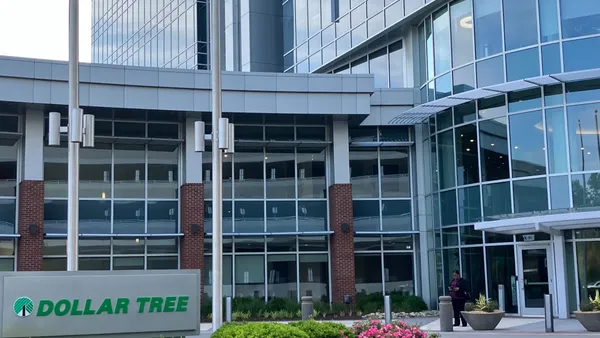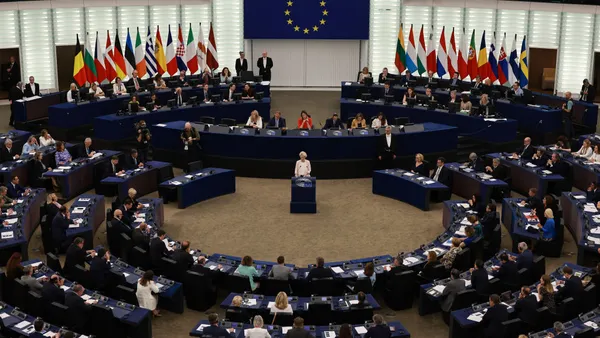Dive Brief:
- As other retailers trumpet clean inventories, stock levels have risen 3.4% YoY per store at Dollar General in Q2 amid falling profits and lackluster sales.
- The company is working to quickly clear inventory, primarily in non-consumable categories, which will result in an estimated $95 million hit to operating profit as it marks down products, CEO Jeff Owen told analysts.
- The discount chain also plans to use part of a $25 million investment toward an improved inventory demand forecasting tool to better support its stores and distribution centers, Owen noted.
Dive Insight:
Dollar General is late to the inventory-clearing party in retail. This time last year, the company’s comparable sales were increasing steadily and it was strategically increasing inventory of high-value products as consumers sought it out for its value prices.
Now, other retailers by and large have flushed out their excess inventory and are improving their margins and profits. But Dollar General’s comparable sales stagnated in Q2, putting it on the defensive in managing its inventory levels.
Some form of the word “inventory” was mentioned more than 35 times on the retailer’s analyst call on Aug. 31, compared to eight times last August and 17 times this June.
Dollar General’s stock levels have actually improved from Q1 of this year, when they were up 14.7%. But the retailer’s overall operating performance suffered in Q2, with comparable sales down slightly and operating profit dropping by more than 24%, compared to a 0.7% decline last quarter.
Dollar General is responding by accelerating clearance efforts, which will involve painful markdowns — something, again, other retailers have worked through over the past year.
“We believe this rightsizing supports our operating priority of enhancing our position as a low-cost operator and that it will accelerate improvement in a number of areas, including store and supply chain efficiencies as well as shrink, damages and cash flow,” Owen said.
The new planning tool mentioned on the call is meant to “further pull more inventory out of the system,” Owen said, adding that “when we have optimized inventory, a stable supply chain, that equals stability inside the store.”














